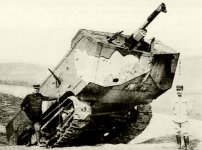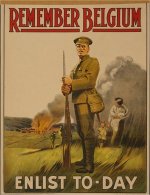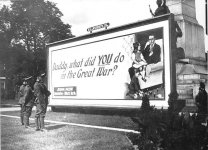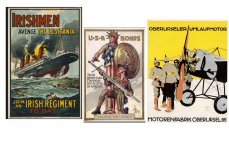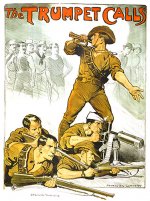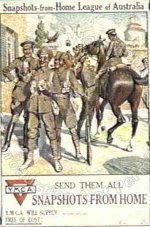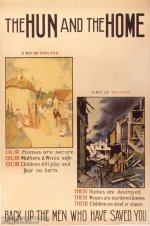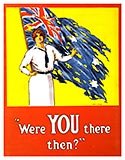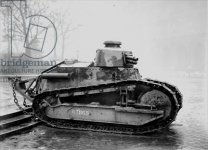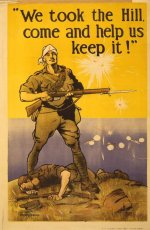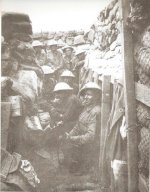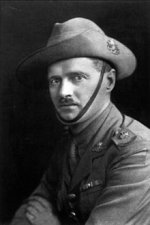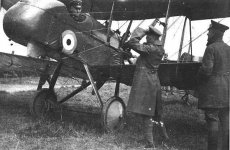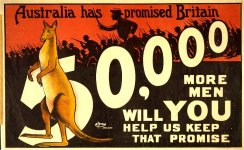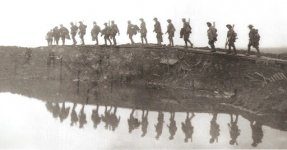You are using an out of date browser. It may not display this or other websites correctly.
You should upgrade or use an alternative browser.
You should upgrade or use an alternative browser.
WW1 Pic Of the Day (1 Viewer)
- Thread starter Rob
- Start date
T
TomB
Guest
Jack
Major
- Joined
- Dec 16, 2011
- Messages
- 6,347
Never heard of this plane but I have copied a blurb below!
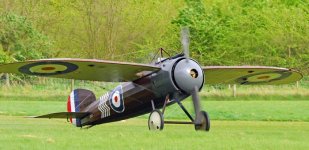
During the spring of 1916 it became clear that existing allied fighters were no match for the new Fokker monoplane fighters, in an attempt to re-balance the situation Captain F.S. Barnwell of the Bristol Aeroplane Co. designed an all new single-seat monoplane aircraft, the Bristol M1C. The Bristol M1C fighter was a very well behaved and effective fighter and in many respects was equal to later fighters like the SE5a, it’s only serious drawback was a psychological one, British High Command felt it was unwise to risk their pilots lives with any aircraft with only a single wing! Consequently only 125 were ordered and these were used in the eastern front and the Middle East rather than the western front, indeed many ended up being used by instructors and senior officers as their personal hack or air-taxi rather than fighters.
It is of note that on the 12th of December 1918 a Bristol M1C flown by Lt. Dagoberto Godoy of the Chilean Army made the first ever flight across the Andes at an altitude in excess 22,000ft.

During the spring of 1916 it became clear that existing allied fighters were no match for the new Fokker monoplane fighters, in an attempt to re-balance the situation Captain F.S. Barnwell of the Bristol Aeroplane Co. designed an all new single-seat monoplane aircraft, the Bristol M1C. The Bristol M1C fighter was a very well behaved and effective fighter and in many respects was equal to later fighters like the SE5a, it’s only serious drawback was a psychological one, British High Command felt it was unwise to risk their pilots lives with any aircraft with only a single wing! Consequently only 125 were ordered and these were used in the eastern front and the Middle East rather than the western front, indeed many ended up being used by instructors and senior officers as their personal hack or air-taxi rather than fighters.
It is of note that on the 12th of December 1918 a Bristol M1C flown by Lt. Dagoberto Godoy of the Chilean Army made the first ever flight across the Andes at an altitude in excess 22,000ft.
waynepoo
Colonel
- Joined
- Jan 3, 2012
- Messages
- 9,797
Rob
Four Star General
- Joined
- May 18, 2005
- Messages
- 26,622
The sinking of the British passenger liner RMS Lusitania was one of the most controversial incidents of the First World War. On 1st May 1915 the Lusitania set sail from New York bound for Liverpool, with over 1,900 passengers and crew on board. Six days later a German submarine, the U-20, sank her as she approached southern Ireland. 1,200 lives were lost, including 128 Americans, causing outrage in both Britain and America. In her defence, Germany argued that the Lusitania was carrying supplies of ammunition and also cited American press warnings discouraging travel on Allied ships. Nevertheless President Woodrow Wilson issued an official protest and there were anti-German riots in American cities. Meanwhile British propaganda capitalized on the incident (see PST 11782, PST 11803, PST 11821 and PST 11856), portraying it as an act of German barbarism. Though America remained for the time neutral, the sinking of the liner caused a significant hardening of opinion against Germany, which eventually led to her entry into the First World War, in 1917, on the side of the Allies.

© IWM (Art.IWM PST 11821)

© IWM (Art.IWM PST 11821)
A neat aircraft and almost forgotten. It had a very high speed for it's day of 130 mph, better than most other aircraft it was flying against, or with. Besides the one wing controversy, the RFC supposedly nixed it for Western Front use because of it's "dangerous" high landing speed of 49 mph, and the extra area it needed to land in or take off from because of this speed. Too bad, because it was a good aircraft that the RFC could have used. -- AlNever heard of this plane but I have copied a blurb below!
View attachment 132024
During the spring of 1916 it became clear that existing allied fighters were no match for the new Fokker monoplane fighters, in an attempt to re-balance the situation Captain F.S. Barnwell of the Bristol Aeroplane Co. designed an all new single-seat monoplane aircraft, the Bristol M1C. The Bristol M1C fighter was a very well behaved and effective fighter and in many respects was equal to later fighters like the SE5a, it’s only serious drawback was a psychological one, British High Command felt it was unwise to risk their pilots lives with any aircraft with only a single wing! Consequently only 125 were ordered and these were used in the eastern front and the Middle East rather than the western front, indeed many ended up being used by instructors and senior officers as their personal hack or air-taxi rather than fighters.
It is of note that on the 12th of December 1918 a Bristol M1C flown by Lt. Dagoberto Godoy of the Chilean Army made the first ever flight across the Andes at an altitude in excess 22,000ft.
Another interesting picture, Jack. This is a photo of a captured DH-2. Don't know who is in the cockpit but the gent on the far right is Manfred von Richthofen. -- Al
waynepoo
Colonel
- Joined
- Jan 3, 2012
- Messages
- 9,797
Great photo. The personal tie-in makes it very special. Hurley was a fantastic photographer. He was the photographer on the South Pole expedition where Shackleton got caught in the ice. He also did some WW1 photography that was in color. -- AlFrank Hurley's photographic tribute to the anonymous heroes of the A.I.F. Ypres sector, 5 October 1917. A special photograph to me as it was taken on the same day my Grandfather was killed in action not far from the same spot.
Wayne.
Louis Badolato
Lieutenant General
- Joined
- Apr 25, 2005
- Messages
- 18,442
Frank Hurley's photographic tribute to the anonymous heroes of the A.I.F. Ypres sector, 5 October 1917. A special photograph to me as it was taken on the same day my Grandfather was killed in action not far from the same spot.
Wayne.
Wayne, that's the great tragedy of war, the human cost. Every time I look at photos of my Uncle Joe (my mom's oldest brother) who died in a B17 in WW2, I wonder about what his life would have been like, what relationship me, and my children would have shared with him and his children, if he had any. I imagine this photo must raise similar but even more ponient thoughts with you about your grand father.
Users who are viewing this thread
Total: 2 (members: 0, guests: 2)


